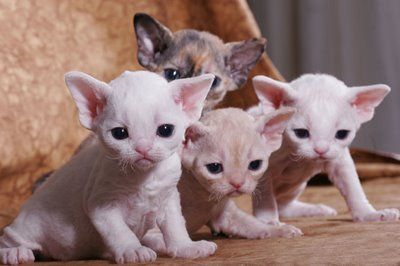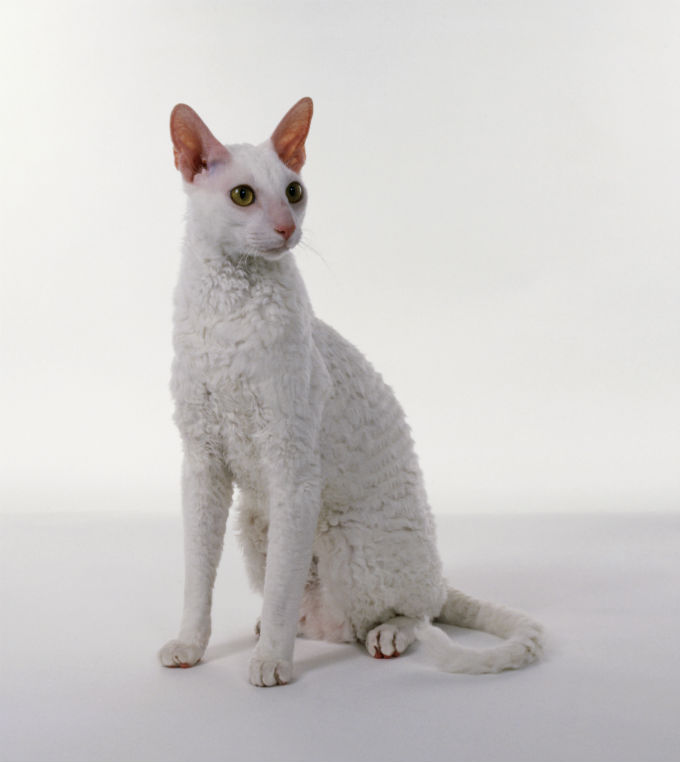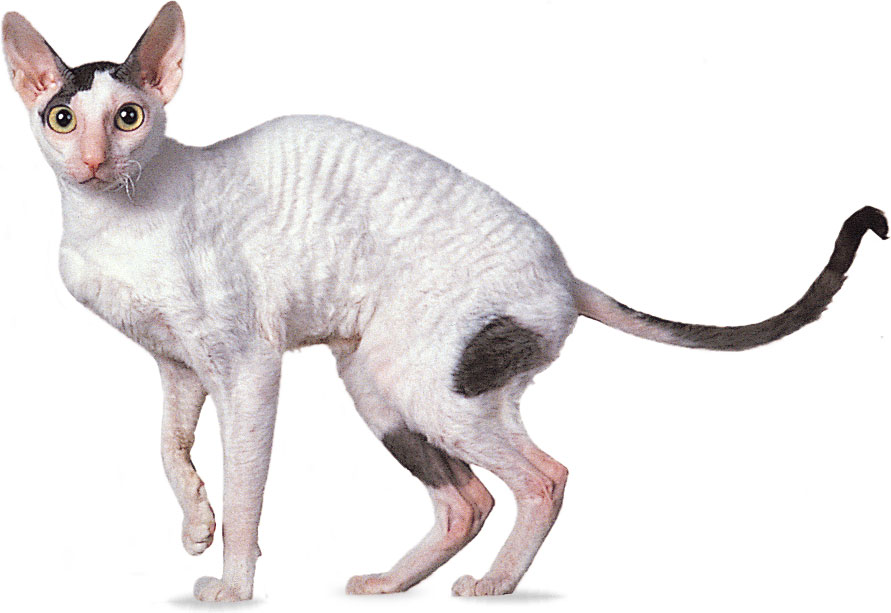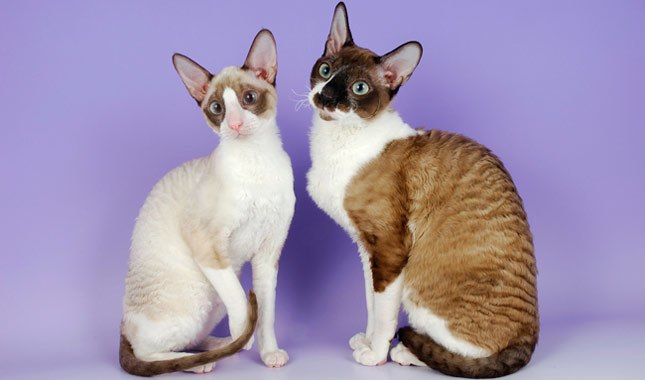
Cornish Rex Cat Best Information, Pictures and Cat Care
Cornish Rex Cat
The Cornish Rex cat has the softest and finest textured coat of any cat breed. The Cornish Rex cat breed was developed from a genetic mutation that originated in a litter born on July 21, 1950, on a farm in Cornwall, England. One of the kittens, a cream-colored male called Kallibunker, had an unusually soft, fine and curly down coat. Kallibunker was used in a breeding program and genetic testing showed that the coat was the result of the recessive rexoid gene.
They called their new breed the Cornish Rex cat. In 1957, two of Kallibunker’s descendants, a pregnant blue female, and a red tabby male, were exported to the US. Two blue-and-white kittens from this litter founded the Cornish Rex breed in the US. Meanwhile back in England, another mutation occurred in nearby Devonshire resulting in the Devon Rex.

While the Devon Rex’s coat looked somewhat similar to the Cornish’s, further investigation showed that Devon’s coat was actually formed from stunted guard hairs and the Cornish had no guard hairs, just down. Attempted crosses produced only straight coated kittens, indicating that they were indeed separate breeds. Apart from the coat, the modern Cornish is taller and leaner than the Devon and its ears are set higher on the head.
The breed was accepted for championship status by the Cat Fanciers’ Association in 1964 but included both the Devon and Cornish Rex as one breed. The breeds were recognized as two separate breeds by the CFA in 1979.
CORNISH REX PICTURES
| Cat size | Small/Medium (slender/muscular) |
| Exercise | Very active – requires daily exercise |
| Grooming | Easy to groom – non-shedding coat |
| Temperament | Lively, active, intelligent, agile and affectionate |
Characteristics
The Cornish Rex cat is a fine-boned, slender and elegant cat that stands tall on long, straight legs and small and dainty feet. The coat is very short, fine in texture, curly and lies close to the body. It is incredibly soft to the touch, prompting comparisons to cut velvet or rabbit fur. Most cats have 3 types of fur – guard hair, middle coat (awn hair) and undercoat. The Cornish only has a downy undercoat.
The Cornish rax cat has a distinct head with large ears set high on a smaller egg-shaped head with high cheekbones, a high-bridged Roman nose, and strong chin. The tail is long, slender and tapered. The body shape resembles a Greyhound or Whippet dog because of the arched back, large chest, and small waist. This breed is hard bodied, muscular and very athletic.

Color Varieties
Color is of secondary importance in this breed and the US Cat Fanciers’ Association (CFA) recognizes the same colors and patterns for the Cornish Rex as for the American and British Shorthairs.
- Solid colors include black, blue, red, cream, and white.
- Tabbies include: silver, brown, red, blue, cream, cameo and patched.
There are also Tortoiseshell and Calico color varieties as well as Tipped, Smoked and Bi-colors. These are the same color varieties like the American Wirehair.
Temperament
The Cornish Rex cat is extremely affectionate, sociable and people-oriented house cats. The Cornish seems almost dog-like when it trots behind its owner – following him everywhere and even wagging its long slender tail. The Cornish Rex cat is very intelligent, athletic and playful – even mischievous at times. They continue their playful and kittenish behavior even when they mature into adults.
The Cornish likes to play games of fetch and catch and other games it will invent for itself. They are extremely fast and agile and make efficient hunters. The Cornish Rex is very inquisitive and extremely vocal with a loud purr. The Cornish gets along well with well-behaved children, other cats, and dogs. This breed loves to be handled and likes lots of attention.

Cat Care
Because the Cornish Rex cat lacks guard hairs and its Rex coat will get wet very quickly, it should only be a house cat and not be let outdoors. All cats shed and most people with allergies are allergic to the cat dander and not the fur. Having said this – the Cornish is a very low-shedding breed and people with allergies should do better with this type of cat. However, there is no substitute for the allergic individual holding and handling a prospective breed of the cat before buying.
The Rex can use its paws and claws like hands to pick up objects and should not be de-clawed. The Cornish will quickly learn to use its scratching post to keep its claws from becoming a problem. This breed loves to eat and care must be taken to keep them from putting on weight. Cornish is an extremely healthy breed and with a good diet and lots of exercises should live to their late teens or early twenties.
